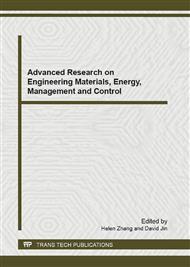p.1132
p.1139
p.1144
p.1151
p.1155
p.1159
p.1164
p.1170
p.1174
Research on Wet Thermal Recovery Plant Used by Air Conditioning
Abstract:
Based on the simulation Computational Fluid Dynamics method, in view of air conditioning with wet thermal recovery plant for heat and mass transfer characteristic, establishes air channels in three-dimensional laminar flow and heat transfer, mass transfer coupling process of mathematical physics model, discusses the air conditioning with wet thermal recovery plant air channels in temperature, concentration and pressure parameters such as distribution, application enthalpy efficiency analysis method to the heat transfer performance is evaluated. The results indicate that structure parameters of wet thermal recovery plant used by air conditioning play important influence for the heat transfer performance and flow resistance performance. The research conclusion provides guidance for air conditioning with wet thermal recovery plant of optimization.
Info:
Periodical:
Pages:
1155-1158
Citation:
Online since:
January 2012
Authors:
Price:
Сopyright:
© 2012 Trans Tech Publications Ltd. All Rights Reserved
Share:
Citation:


